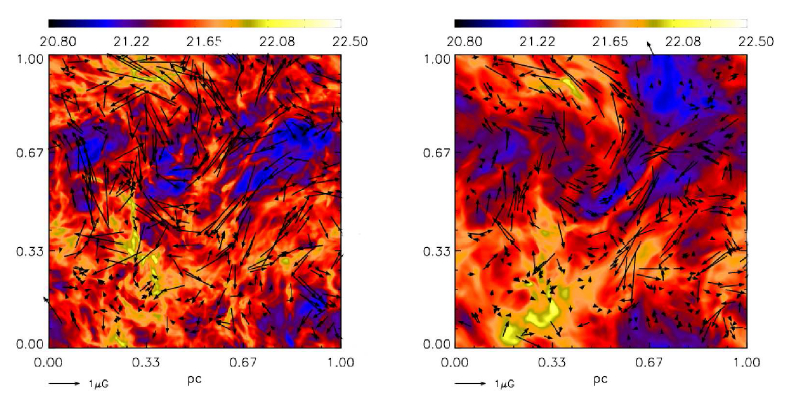| EPoS Contribution |
|
Filament formation from non-ideal MHD turbulence
Evangelia Ntormousi CEA, Saclay, FR | |
|
Interstellar filaments and their likely connection to star formation
have been brought into focus again by high resolution observational surveys. An especially puzzling matter is that local interstellar
filaments appear to have the same thickness, independent of their column density,
which requires a theoretical understanding of their formation process and the physics that governs their evolution.
In this work we explore a scenario in which filaments are dissipative structures of the large-scale interstellar turbulence cascade and ion-neutral friction is affecting their sizes by preventing small-scale compressions. We employ high-resolution 3D MHD simulations, performed with the grid code RAMSES, to investigate non-ideal MHD turbulence as a filament formation mechanism. Simulations of both driven and decaying MHD turbulence show that the morphologies of the density and the magnetic field are different when ambipolar diffusion is included in the models: The densest structures are broader and more massive as an effect of ion-neutral friction and the power spectra of both the velocity and the density steepen at a smaller wavenumber. The comparison between ideal and non-ideal MHD simulations shows that ambipolar diffusion causes a shift of the filament thickness distribution towards higher values. However, none of the distributions exhibit the pronounced peak found in the observed local filaments. | |
 | |
| Caption: Column density in ideal (left) and non-ideal (right) MHD turbulence. The arrows show the projected magnetic field. | |
| Collaborators: P. Hennebelle, CEA, FR Philippe Andre, CEA, FR J. Masson, U Exeter, GB |
Suggested Session:
Filaments |

